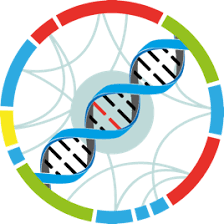Study : Tissue-specific structurome changes in the RNA structurome mediate salt salinity response in Arabidopsis
Identification
Name
Tissue-specific structurome changes in the RNA structurome mediate salt salinity response in Arabidopsis
Identifier
dXJuOkVWQS9zdHVkeS9QUkpOQTUxNDA0MA==
Description
We employed Structure-seq2 method to probe RNA structure genome-wide in Arabidopsis shoot and root tissue separately and investigate the effect of salt stress on the RNA structurome in vivo. Overall design: For each structure-seq library, ~40 hydroponically grown Arabidopsis plants were used, which were dissected into shoot and root tissues. For the +DMS shoot sample, forty excised shoots from control or NaCl treatment were immersed in 20 mL DMS reaction buffer (40 mM HEPES (pH 7.5), 100 mM KCl, and 0.5 mM MgCl2) in a 50 mL conical centrifuge tube. Then 150 µl DMS (D186309, Sigma-Aldrich) was immediately added to the solution to a final concentration of 0.75% (~75 mM) for 5 min of DMS treatment, after which dithiothreitol (DTT) at a final concentration of 0.5 M was supplied to quench DMS in the reaction for 2 min followed by two washes with deionized water before immediate drying and freezing in liquid nitrogen. The −DMS sample was processed through the same procedure by placing materials in the DMS buffer for 20 min but without addition of DMS. Three independent biological replicates were prepared for both control and NaCl-treated shoot libraries, and for both −DMS and +DMS libraries, for a total of three −Salt−DMS libraries, three −Salt+DMS libraries, three +Salt−DMS libraries, and three +Salt+DMS libraries. All procedures for generation of root Structure-seq libraries were identical as for shoot library preparation, except that the initial material was the root tissue from forty plants each of control or NaCl treatment. Frozen samples were subjected to RNA extraction using the NucleoSpin RNA Plant kit (Cat# 740949, Macherey-Nagel, Germany) following the manufacturer’s protocol. Then the Structure-seq libraries were prepared according to the Structure-seq2 protocol, and starting with 300 ng total RNA. In total, 24 Structure-seq libraries were generated. Library DNA size distribution and consistency between biological replicates was assessed by Agilent 2100 Bioanalyzer (Agilent Technologies). After qPCR to quantify the library molarity, a pool of all libraries at equal molarity was made, and libraries were subjected to next-generation sequencing on an Illumina HiSeq 2500 at the Genomics Core Facility of the Penn State University to generate 150 nt single-end reads.
Genotype
| Accession number | Name | Taxon |
|---|
